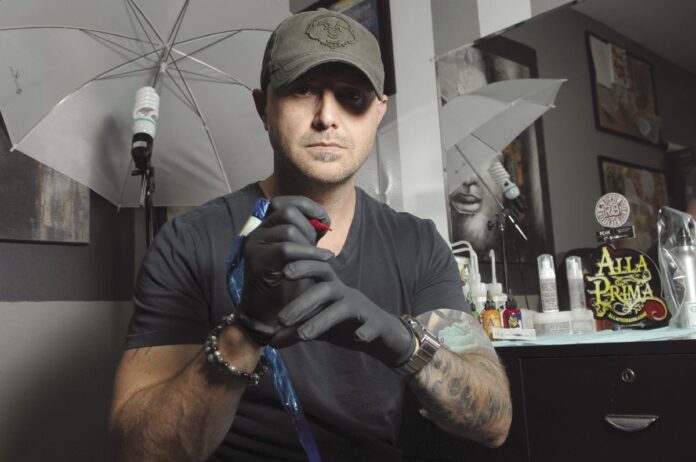MERCEDES — If Mahmood Alfayoumi is right about this, it could mean a medical breakthrough.
Alfayoumi, a junior at the South Texas Independent School District’s Science Academy in Mercedes, is working on an idea to prevent heart attacks by using a methodology similar to the one used for placing stents to open clogged arteries in heart patients.
The technology involves injecting a medical solution into a blocked artery’s sub-intiminal wall rather than placing a stent. He says the method would halt atherosclerosis. He calls his innovation Atherosclerosis Prevention using Chemotherapy, or APuC for short. Atherosclerosis refers to the buildup of fatty deposits, called plaque, inside arteries. Sometimes the plaque can break loose, become a blood clot and cause a heart attack, according to medical literature on the subject
Alfayoumi says current treatments for atherosclerosis are incomplete because while they reduce the symptoms, the plaque remains and could cause a heart attack later.
“Most current ideas reduce the amount of blockage the plaque takes up, minimizing the symptoms faced,” Alfayoumi says in a paper summarizing his ideas. “However, the main problem with this is that a heart attack can still happen, since the plaque is not yet stable. Using my solution, the process of atherosclerosis is stopped, preventing the plaque from rupturing in the future.”
Alfayoumi said he has been working with an engineer to perfect the idea, and with a patent attorney to protect his rights to develop the device in the future.
Basically, the device is a tiny cylinder capable of injecting the medical solution inside an artery, complete with a miniature video camera to guide the surgeon, all of which attaches to a wire controlled by the surgeon much like in angioplasty or stent surgery.
Alfayoumi said he developed the idea as a project for a competition sponsored by the Technology Student Association in January at his school. He said the judge placed his project last in the competition.
He said the poor finish left him wanting “to go out, design a model, test it and implement it here in the Valley.” The motivation for his device is a desire to help people here in the Rio Grande Valley deal with problems that stem from obesity and diabetes, among them heart problems, he said.
“The main thing was to look outside the box. … I wanted to actually look at a problem using my courses in physics, chemistry, biology and engineering,” he said. “I was able to develop a mindset of thinking outside the box.”
Alfayoumi also is working on another innovation, this one a more flexible replacement knee to be used in knee replacement surgery. He said the innovation is inspired by his father, Dr. Fadi Alfayoumi, who suffered a sports injury at 17 that left one of his knees unable to twist and turn normally.
The younger Alfayoumi designed the replacement knee during a summer program at the University of Texas Rio Grande Valley.
“I’m hoping to patent both ideas,” he said, adding that he’s talking to engineers about designing and implementing both innovations.
Alfayoumi, who lives with his family in Rancho Viejo, started at Science Academy in ninth grade. Prior to that he attended St. Joseph Academy and Episcopal Day School.




